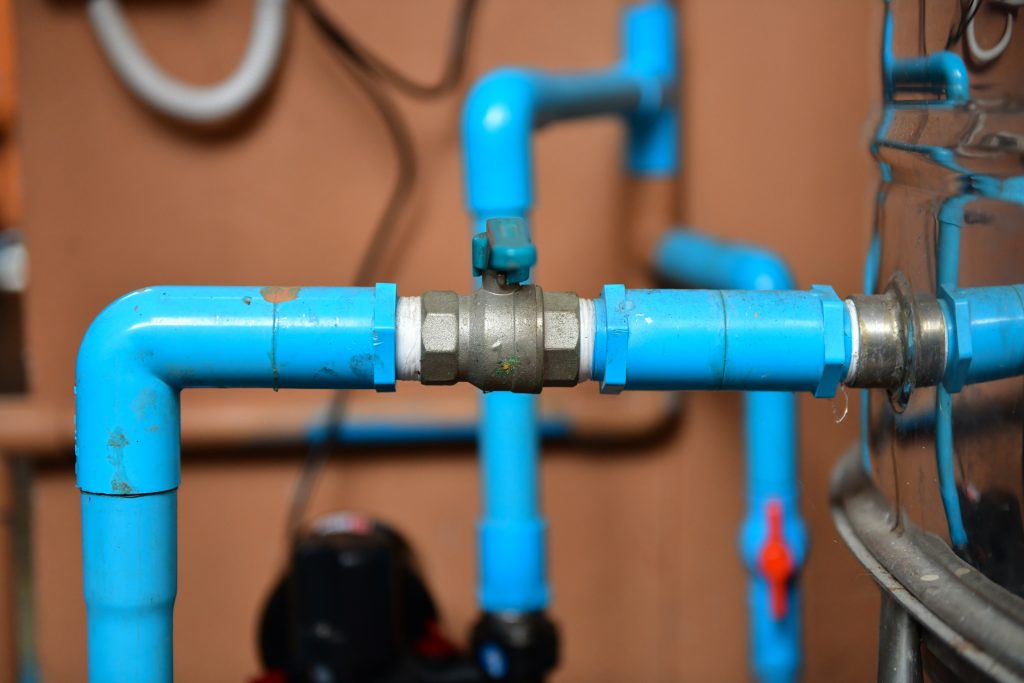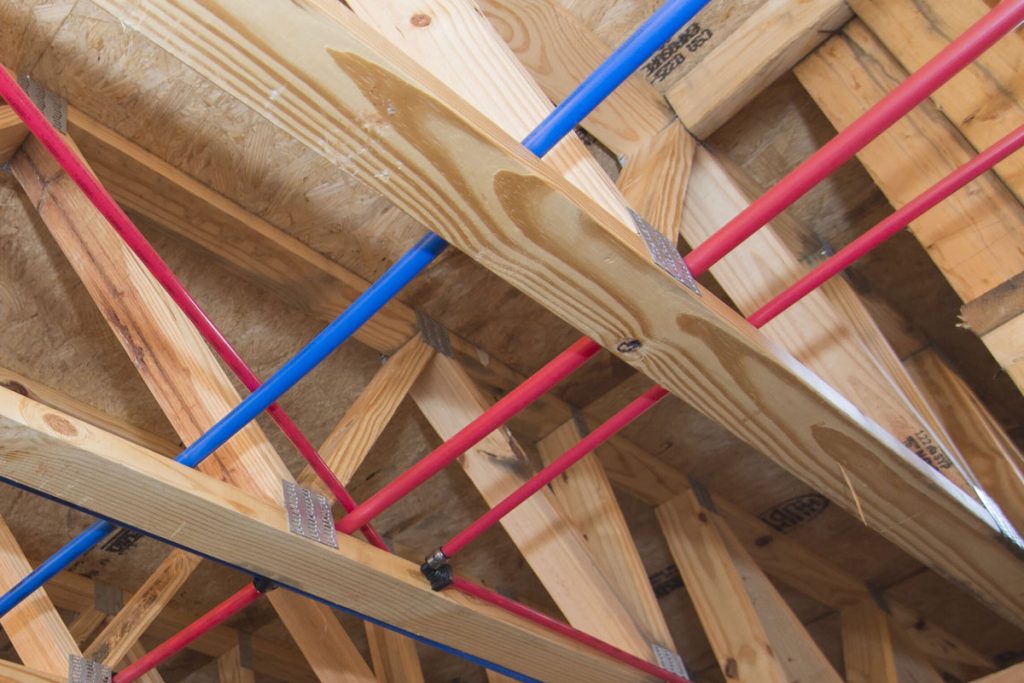When you plan to install or renovate plumbing lines in a house, connecting two water pipes might seem like the simplest task, but in fact, it still requires the right knowledge, tools and materials to ensure a leak-free and durable result. Whether you are repairing a damaged section or remodelling a plumbing system, understanding the different plumbing pipes and fittings is essential for both safety and efficiency.
Before grabbing your wrench, it’s important to know what types of pipes you’re working with and which fittings will get your job done. For example, a fitting for connecting two pipes in the same direction is different from a fitting used to change the direction of a pipe. In this guide, we’ll break down the basics to help you understand the proper way to connect two water pipes. Whether you are a DIY lover or a first-time homeowner, PlumbingSell has got you covered with a high-quality and wide range of plumbing supplies for you to choose from.
Table of Contents
Identify the Type of Pipes You’re Working With
The first important step to connect two water pipes is to identify the type of pipes you are working with. Different types of materials require different connection methods and plumbing fittings; using the wrong type of fitting could cause leakages and damage to the plumbing system.
Here are the most common types of plumbing pipes you use in both residential and commercial piping systems.
PEX
PEX pipes are becoming more popular in the modern plumbing industry because of their flexibility, affordable, and ease of installation. They are widely used for both hot and cold water supply lines, with color-coded markings, and are compatible with crimp, clamp, and push-fit fittings. However, specially designed fittings like elbows, tees, and couplings are required to work with PEX pipes.
PVC
PVC pipes are commonly used in drainage, waste and cold-water plumbing systems. They are lightweight, corrosion-resistant, and easy-to-cut materials. PVC is ideal for projects that don’t involve high-temperature water supply. Unlike fittings for PEX pipes, when selecting types of pipe fittings for PVC, make sure to match the diameter of the fittings and pipes. PVC pipes require solvent cement for connection and create a watertight seal.
Copper
Copper pipes are a traditional type of water pipe that is durable, long-lasting, and bacteria-resistant. They are often used in older homes and are normally joined using soldering, compression, or push-fit fittings. Copper pipes are the most challenging type of material to connect, as soldering requires heat and a certain level of skill. However, easy install alternative push-fit fittings are available if you are not sure if you can handle the soldering of copper pipes, especially for connecting fittings used to change the direction of a pipe.
Types of pipe fittings
Pipe fittings are used to join plumbing components for many types of configurations. They are used to either connect straight pipe sections, change the flow direction, or adjust pipe size. Understanding different types of pipe fittings and how they function is key to successful plumbing installation or repair.
Adapters
Adapters are fittings used to extend the length of pipes, connect pipes of different diameters, or change the type of connection to another. These are essential when working with mixed-material systems such as copper to PEX or PVC to metal.
Caps and plugs
Caps and plugs are fittings used to close the end of a pipe. Caps are designed to fit over the outside of the pipe, while plugs are inserted into a fitting opening. Both fittings are capable of stop water flow temporarily or permanently and are essential for capping off unused lines.
Elbows
Elbow fittings are used to change the direction of a pipe. The most common angles are 45 degrees and 90 degrees, which allow water lines to bend around obstacles, such as piping systems under sinks or behind appliances. Elbow fittings come in both long and short radius that provide a flexible option for different projects.
Couplings
Couplings are the most straightforward fitting for connecting 2 pipes in the same direction. They are designed to extend the pipe or repair a broken section, and are available in female threaded and unthreaded variations. Couplings come in full, slip, and reducing versions, and are designed to fit various appliances.
Tees
A tee fitting is shaped like the letter “T” and is used to connect three or more pipes, two in a straight line and one at another angle. They are perfect for branching off a water line to another fixture. Tee fittings are also available in equal and reducing variations, depending on the pipe sizes used.
Methods of Connecting Pipes
There are several ways to connect water pipes, depending on the type of pipe you are working with and the demands of the plumbing system.
Soldering
Soldering is the most common connection method for copper plumbing pipes and fittings. It involves heating the pipe and applying solder to seal the joint. Soldering can create a strong, watertight seal that’s been trusted by professionals for decades.
However, it does require a certain level of training for proper operation, and as a torch is required, which could cause fire hazards, which can be very dangerous when working in tight quarters or places.
Threaded Connections
Threaded fittings are another commonly used connection method in plumbing. They come in two main categories: male and female. Male threads have external threads that could be screwed on the outside of the pipe or fitting, while female threads have internal threads that are screwed insided.
In plumbing applications, male and female threads are screwed together with pipes and sealed with Teflon tape. They are easy to disassemble and assemble, so if you are looking to connect water pipes temporarily, threaded connections will be your best option.
Crimp and Expansion Connection
Crimping and expansion methods are the two primary methods specifically used in PEX piping systems. PEX pipes have become popular nowadays for their flexibility and ease of installation.
Crimp connections use a metal ring and a crimping tool to form a tight seal around the pipe and fittings. It is quite a DIY friendly installation method, as crimping tools are easy to work with and do not require too much technique.
On the other hand, expansion methods, normally seen in PEX-A piping connections, could require more practice to work with. An expansion tool is required to install expansion fittings into PEX pipes. After the fitting is inserted, the pipe will contract to seal tightly around it.
Both methods are durable, reliable, and well-suited to all standard types of pipe fittings compatible with PEX-A, PEX-B, and PEX-C pipes. They are ideal for new constructions or remodels that require PEX pipes.
Conclusion
Connecting two water pipes might sound like an easy task, but as we’ve explored, it requires the right understanding of plumbing pipes and fittings as well as the proper techniques to ensure a safe and leak-proof connection. Whether you are working with PEX, PVC, or copper pipes, knowing which type of pipe fittings are needed for connecting two pipes in the same direction or changing the direction of a pipe is essential.
Now that you are familiar with the type of pipe fittings, need help choosing the right fittings or tools? At PlumbingSell, we offer a full selection of high-quality plumbing fittings, PEX tools, pipes, and all the essential supplies to help you get the job done right.



